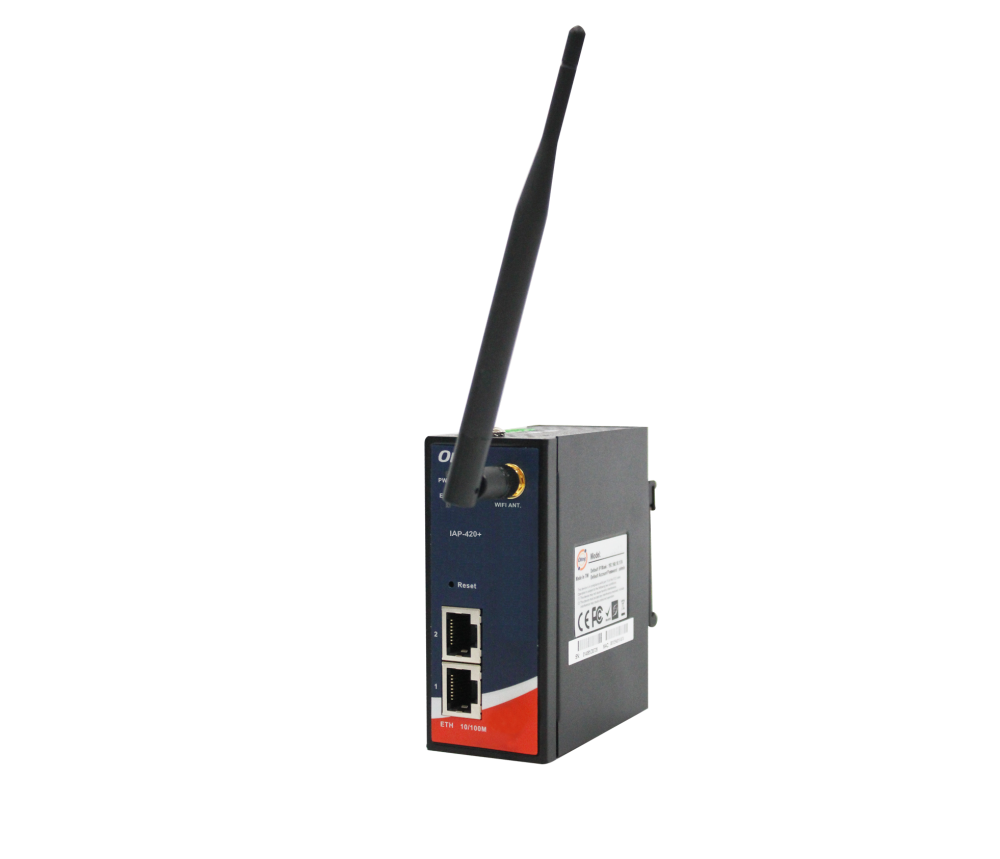Industrial Access Points
An access point is usually connected to a wired network, either via Ethernet or another wired connection. It receives data from the connected devices and forwards it to the wired network. The main role of an access point is to establish a wireless connection and allow wireless devices to access the network and the internet.
Our access points support a variety of WLAN standards, including 802.11a, 802.11ac, 802.11b, 802.11g and 802.11n. With these standards, you can choose the best combination of speed, range, and reliability for your wireless network infrastructure. Support for 802.11a & 802.11ac lets you benefit from high transmission rates and improved performance, while 802.11b & 802.11g ensure broad compatibility with legacy devices. The 802.11n standard offers a balanced mix of speed and range. Our access points not only offer excellent performance, but also installation flexibility. Thus, you have the option to conveniently mount the devices on a DIN rail or on the wall. This allows you to optimally place the access points in your network and adapt them to your specific requirements.


Industrial access points:
WLAN connectivity for demanding environments
Modern industrial applications require reliable and stable WLAN connectivity, even in demanding environments. Industrial access points meet these requirements with technically sophisticated features and resilient design. Here we take an in-depth look at their specific features and benefits.
2.4 GHz and 5 GHz frequency bands for optimal connectivity:
Industrial access points offer the ability to use both the 2.4 GHz and 5 GHz frequency bands. This enables better management of wireless networks in congested areas. It also provides flexibility to choose the appropriate frequency band depending on requirements.
Support for various WLAN standards:
The industrial access points support a wide range of WLAN standards such as 802.11a, 802.11ac, 802.11b, 802.11g and 802.11n. This enables compatibility with a wide range of devices and ensures seamless integration into existing networks.
Robust temperature resistance:
With a temperature range of -20°C to +80°C, these access points are designed for more extreme environments. This ensures reliable performance in environments with fluctuating temperatures.
Versatile mounting options:
Mounting can be on DIN rails or walls, which increases installation flexibility. This is particularly advantageous in space-constrained or special industrial environments.
Reliable protection against external influences:
The IP30 protection rating ensures that the access points are protected against the ingress of foreign bodies with a diameter greater than 2.5 mm. This robust design is crucial to ensure long-term operational reliability in industrial environments.
High transmission rates for smooth data transfer:
Industrial access points offer an impressive transmission rate of 100 Mbit/s up to 1 Gbit/s. This ensures fast and reliable data transmission that meets the requirements of modern industrial communication.
Efficient network monitoring in industry:
Industrial Access Points in detail
In a modern industrial environment, access points play a crucial role in providing reliable WLAN connectivity. Efficient management and configuration of these access points is crucial to ensure smooth operations. Here we take a closer look at the options and technologies for managing and configuring industrial access points.
Remote management for maximum flexibility:
Industrial access points typically offer remote management capabilities. This means that administrators can remotely configure, monitor and maintain the access points. This is particularly useful in large industrial networks or in situations where physical access to the devices is difficult.
Various management options:
Various tools are available for configuring and managing access points. One commonly used method is the web interface, which provides a user-friendly graphical interface. Here, administrators can adjust settings, update firmware and monitor devices.
Technical insights through SNMP and CLI:
For advanced users, many industrial access points offer support for SNMP (Simple Network Management Protocol) and CLI (Command Line Interface). SNMP allows network devices to be monitored and managed through a centralized management system. CLI provides a text-based interface that allows deeper technical insight and customization.
Benefits of efficient management:
Efficient management of access points brings a number of benefits. This includes the ability to quickly make configuration changes, detect and fix problems, monitor performance, and implement security measures. This is especially important in industrial networks where reliability and security are top priorities.
Overall, the management and configuration of industrial access points enables optimal performance, reliability and security in industrial WLAN networks. The combination of remote management, various management options and technical insights provides the flexibility and control that are essential for complex industrial networks.





